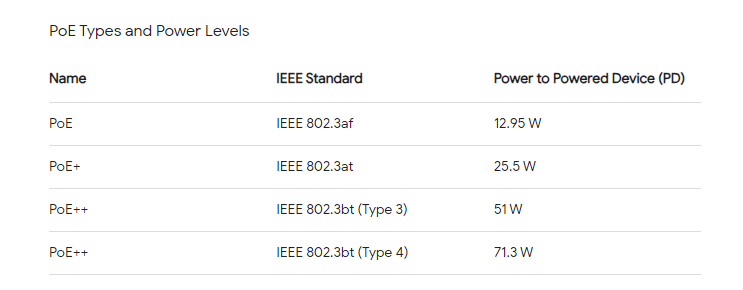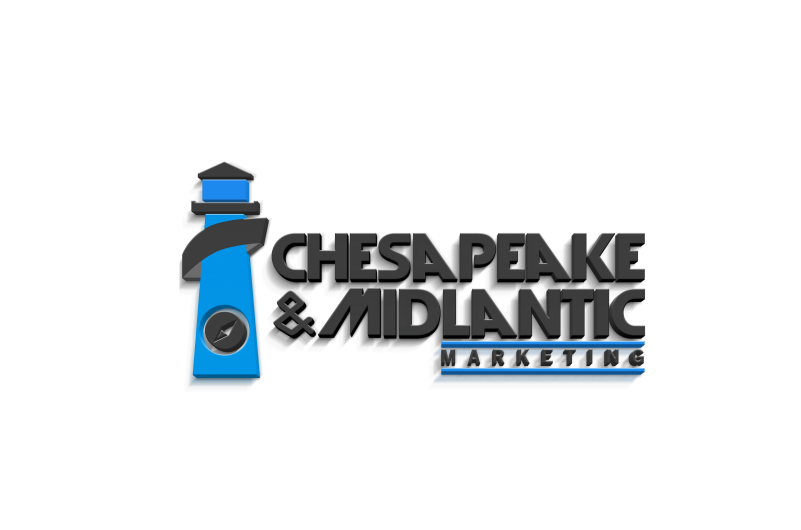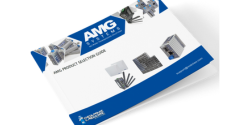
Tom sat down with Dave Sinise of AMG Systems to clarify what has become very confusing terminology surrounding the use of network powered security cameras and other devices.
However, even if you have the proper switch or injector, you need to ensure the power supply for that network device is paired properly to ensure the switch or injector has enough power for the edge devices attached to it. Watch their discussion for a few very good tips, especially for system designers >>
Power over Ethernet (PoE) is a technology that allows network cables to carry electrical power along with data to edge devices like security cameras, PIDS controllers, and other devices on the network. This capability simplifies the installation of devices by eliminating the need for separate power cables, thereby reducing installation costs and allowing for greater flexibility in device placement.
Here, Dave and Tom continue their discussion about the PoE injectors...
IEEE 802.3xx PoE Standards
The evolution of PoE technology has led to the development of several IEEE standards, each designed to meet different power requirements and application scenarios:
-
IEEE 802.3af (PoE) - The original PoE standard, introduced in 2003, supports up to 15.4 watts of DC power (minimum 12.95 watts at the device). This standard is sufficient for many simple devices like basic IP cameras and VoIP phones.
-
IEEE 802.3at (PoE+) - Introduced in 2009, this standard is an enhancement over 802.3af and supports up to 30 watts of power (minimum 25.5 watts at the device), enabling support for devices that require more power, such as dual-band wireless access points or video phones.
-
IEEE 802.3bt (4PPoE, PoE++ or UPoE) - The most recent advancement, ratified in 2018, significantly increases the power delivered over Ethernet cables. It enables powering advanced surveillance cameras with pan-tilt-zoom (PTZ) features and even IP speakers.
-
IEEE 802.3bt introduced 4-Pair PoE as a means of supplying higher power to PDs that need more than the current 25.5W supplied by IEEE 802.3at. To increase the available power without damaging the Ethernet cable, the standard introduced the ability to use all four pairs within the Ethernet cable instead of the two pairs used by previous standards (802.3at, 802.3af).
-
Powered Devices (PD) are divided into different types and classes based on PD power requirements. The power supplied by the Power Sourcing Equipment (PSE) is higher than the power PD draws to accommodate for the line losses that can result with the use of the standard maximum length cable (100m).
-
- Type 1: PSE can supply maximum of 15.4W, and PD can draw a maximum of 13W
- Type 2: PSE can supply maximum of 30W, and PD can draw a maximum of 25.5W
- Type 3: PSE can supply maximum of 60W, and PD can draw a maximum of 51W
- Type 4: PSE can supply maximum of 90W, and PD can draw a maximum of 71W
- Classes of PD:
- Class 0: Type1 PD, it can draw a maximum of 13W
- Class 1: Type1 PD, it can draw a maximum of 3.84W
- Class 2: Type1 PD, it can draw a maximum of 6.49W
- Class 3: Type1 PD, it can draw a maximum of 13W
- Class 4: Type2 PD, it can draw a maximum of 25.5W
- Class 5: Type3 PD, it can draw a maximum of 40W
- Class 6: Type3 PD, it can draw a maximum of 51W
- Class 7: Type4 PD, it can draw a maximum of 62W
- Class 8: Type4 PD, it can draw a maximum of 71.3W
-

Each subsequent standard is backward compatible with the previous ones, ensuring that newer PoE switches can support devices designed for older standards without issues.
Choosing the Right PoE Standard
When selecting PoE equipment, it's essential to consider the power requirements of your devices. For low-power devices, an IEEE 802.3af-compatible solution may suffice. However, for more power-intensive applications or future-proofing network infrastructure, considering IEEE 802.3at or IEEE 802.3bt equipment is advisable. And again, watch out for the capability of the power supply that is driving the network device.
Our team can help with proper network device selection if you contact us >>
More about AMG Systems
AMG Top Products Guide









